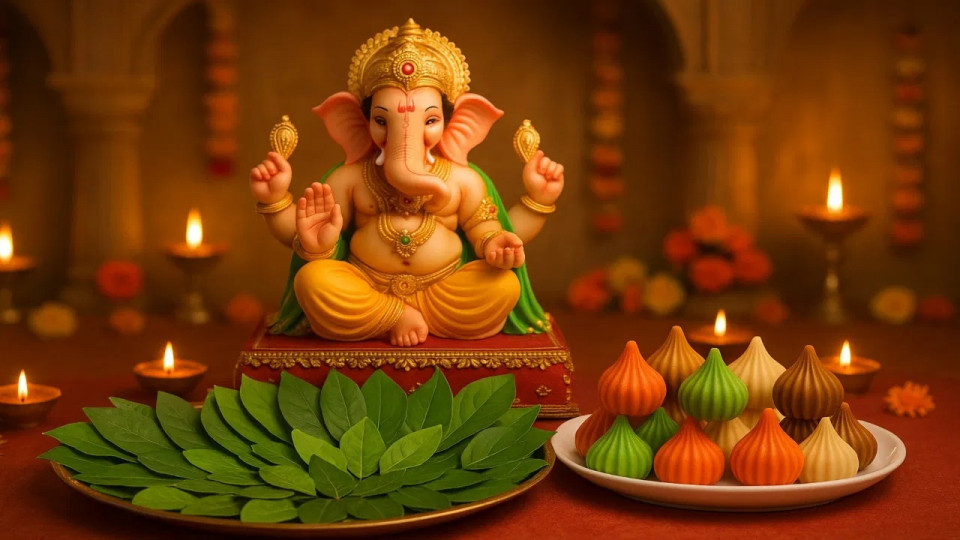
Ganesh Chaturthi 2025: Why 21 Leaves Are Offered in Ganesh Puja – Full List and Meaning (Image Source: AI Generated Image by ChatGPT)
Ganesh Chaturthi, one of the most popular Hindu festivals, will be celebrated across the country with devotion and grandeur. On this day, devotees install idols of Lord Ganesha and worship him for 10 days. A unique ritual of this festival is *Patra Puja*, where 21 different sacred leaves are offered to Lord Ganesha along with modaks and laddus. Scriptures say that each leaf has its own religious and spiritual meaning, and offering them helps remove obstacles while bringing happiness, prosperity, and blessings.
The use of 21 leaves in Ganesh Puja is not just a ritual but a profound expression of faith.
Each leaf holds its own spiritual meaning and blessing—Durva symbolizes prosperity, Bel represents purity, and Shami denotes victory. It is widely believed that worshipping with these leaves helps remove life’s obstacles and brings happiness and abundance.
The Ganesh Purana mentions that once Lord Ganesha and Tulsi had cursed each other. For this reason, Tulsi leaves are not offered to Ganesha on regular days. However, on Ganesh Chaturthi, this becomes an exception, and offering Tulsi leaves on this day is considered highly auspicious. Thus, the worship of 21 leaves during Ganesh Chaturthi is not just a religious custom, but also a symbol of energy, health, and prosperity.













Copyright © 2025 Top Indian News
